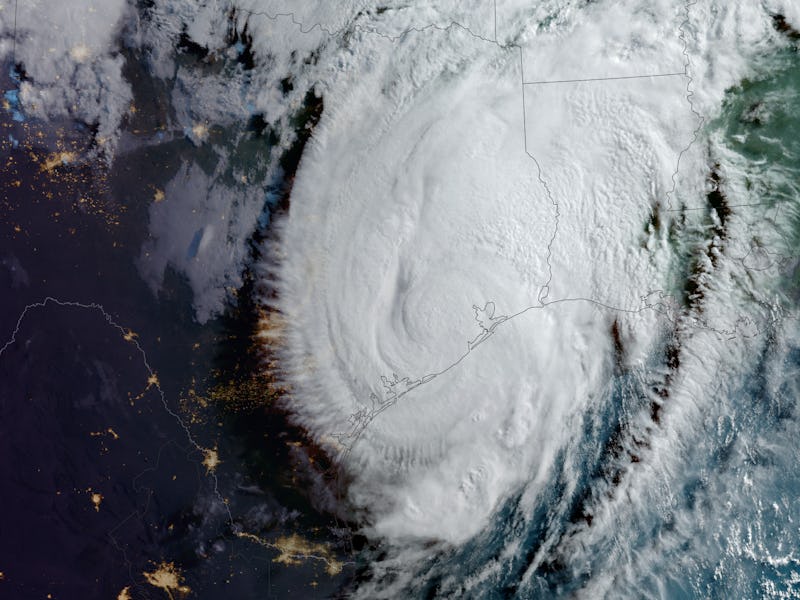Hurricane Beryl Likely Contributed to Boeing Starliner’s Ongoing Delays
There's not much anyone can do to help from 250 miles above the ground.

It’s difficult to be away from your loved ones when they’re facing something difficult — especially if you’re 250 miles away, stuck on a very extended layover, in space.
Starliner’s crew watched from above as Hurricane Beryl made landfall in Houston earlier this week, leaving thousands of people — including their families and many of the engineers working on their ship’s thruster issues — without electricity in the middle of a southeast Texas summer.
“Butch [Wilmore] and I were up in the cupola the other day right as it was getting ready to hit the Texas coast,” said Starliner test pilot Suni Williams in a press conference on Wednesday. 250 miles above, the astronauts were too far away to help their families stock up on groceries and board up windows before the storm, or clean up fallen branches in its wake. They could only watch.
And according to Starliner test commander Butch Wilmore, they’d been watching Beryl from the very beginning.
“I actually took a picture of a storm that was off the west coast of Africa about a week and a half before the hurricane impacted [Houston],” says [Butch]. “I'm about 98 percent sure that was the one that became Beryl.”
NASA astronaut Matthew Dominick took this photo of Hurricane Beryl, then a Category 4 storm, as it raged across the Caribbean on July 1. By the time the storm hit Houston a few days later, it had weakened to a Category 1.
“A little bit of a hiccup”
NASA’s Johnson Space Center stands just 20 miles from Galveston Bay, and just 13 feet above sea level. This low-lying stretch of coastline is also home to the astronauts, their families, and many of the NASA employees and contractors who keep the ISS and other crewed missions flying, alongside more than 7 million other people in Houston and its surrounding communities.
More than 2 million of those Houstonians found themselves without electricity in the wake of Hurricane Beryl, and as of Wednesday evening, more than a million people were still sitting in the un-airconditioned dark. That includes Williams’ family – and [Stitch], who spoke to the press from Johnson Space Center on Wednesday without a video link, because most of the employees who usually run those calls couldn’t make it into work due to the hurricane’s aftermath.
The hurricane has also slowed down investigation of the thruster failures and helium leaks that have delayed Starliner’s return.
“A little bit of a hiccup with Beryl coming through,” said Stich. “Some people are impacted and not able to work as much as we would hope.”
This NASA satellite image reveals the extent of the power grid failure following Beryl; on the left is a view of Houston’s city lights on the night of July 5, and on the right is the same view the night after Beryl’s landfall.
Not Houston’s, or NASA’s, First Rodeo
This isn’t the first time astronauts have watched from orbit as a monster storm crashed over the Houston area — and compared to some of the disasters that astronauts have watched unfold below them, Beryl has been relatively mild.
“All of our family is doing well,” says Wilmore. “We've got downed trees like most people, but thankfully we've got good church folks and good neighbors that are coming by and helping us out cleaning up.”
In August 2017, an ISS crew including astronauts Randy Bresnik, Jack Fischer, and Peggy Whitson looked on as Hurricane Harvey dumped a year’s worth of rain on the Houston area in the course of a few days. Dozens of people died, and “the name still evokes a chill for a majority of Houstonians and team members,” wrote Johnson’s Catherine Williams a year later.
And in 2008, crews watched from above as Hurricane Ike’s winds and storm surge scoured a swath of the Gulf Coast, forcing Mission Control to relocate its operations to Alabama — and delay the docking of a Progress cargo ship with supplies for the crew.
Compared to devastating storms like Ike and Harvey, Beryl was relatively minor, and the crew sounds upbeat.
“Power is lost, trees are down, but we're a big team,” says Williams. “Everybody pulls together in Texas.”